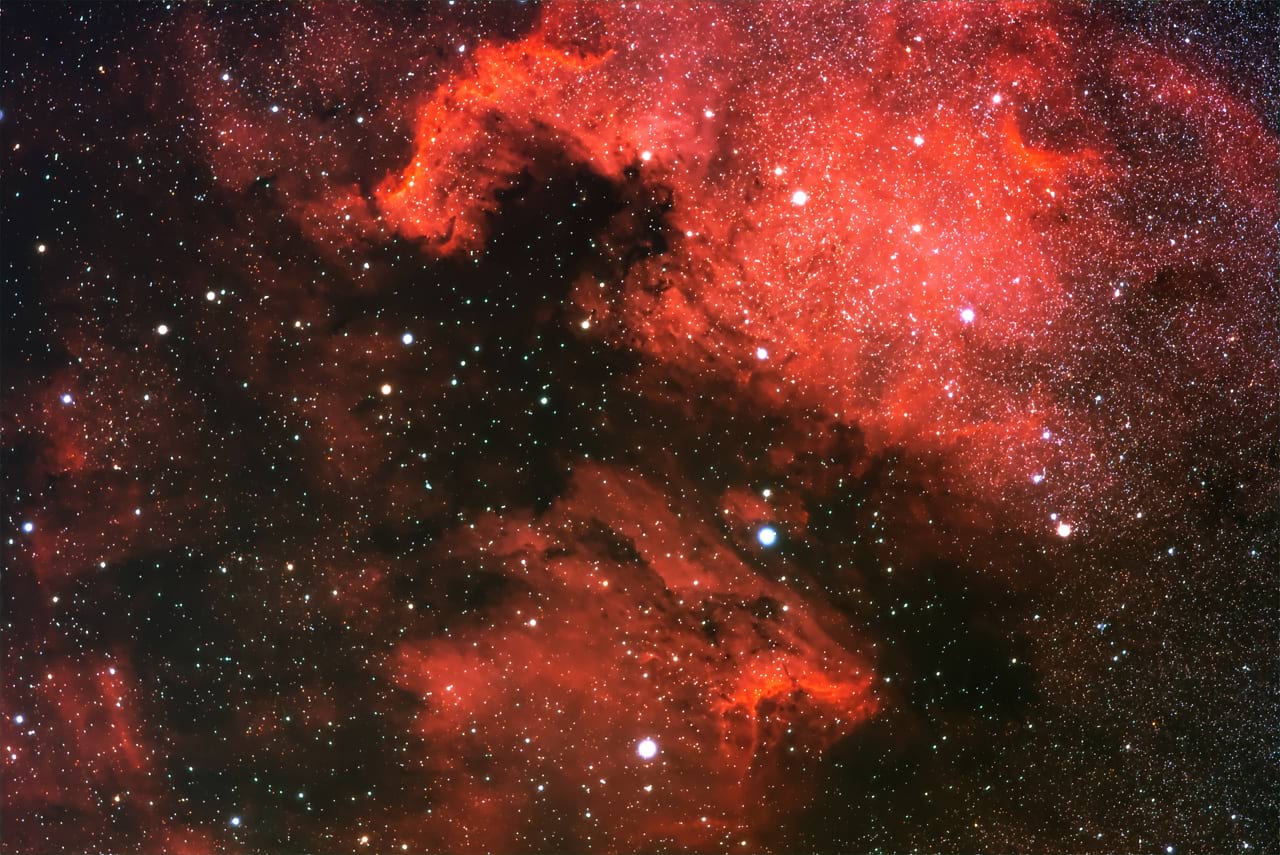About calibration frames
Calibration frames help to clean up imagery, by identifying and removing noise from the light frames—the excess of it, at least—as well as dust spots, vignetting and other artefacts.
The use of calibration frames is optional but strongly recommended.
Noise is inherent in the shooting environment and is influenced by several factors, including: overall thermal conditions, which can vary over time; background electrical interference in the camera; and hot pixels in the camera sensor. For example, hot pixels could be misidentified as stars, affecting alignment during stacking.
Types of calibration frame
Affinity Photo can process four kinds of calibration frame, each of which identifies different noise.
- Dark frames—identify hot pixels and thermal noise, arising from long exposure times, to be cleaned from the light frames. Taken during the same session and at the same shutter speed as light frames but with the lens cap on.
- Bias frames—identify electrical read noise from the camera. Taken at the fastest shutter speed available with the lens cap on.
- Flat frames—identify artefacts such as dust specks and lens vignetting, ensuring evenly illuminated images. Captured during the same session as light frames.
- Dark flat frames—to pre-process the flat frames by cleaning noise from them, like dark frames do for light frames. Taken at the same shutter speed as the flat frames.
Light
Bias
Dark
Flat
Dark flat
End result

In practice, multiple frames of each type are used to improve the SNR ratio and improve the end result.
File formats
Light frames and calibration frames should be RAW or FITS (Flexible Image Transport System) files from a DSLR or astronomy camera, respectively.
They must be unprocessed for best results to avoid assumptions being made about white balance and tonality, which are approximated later in the compositing process.